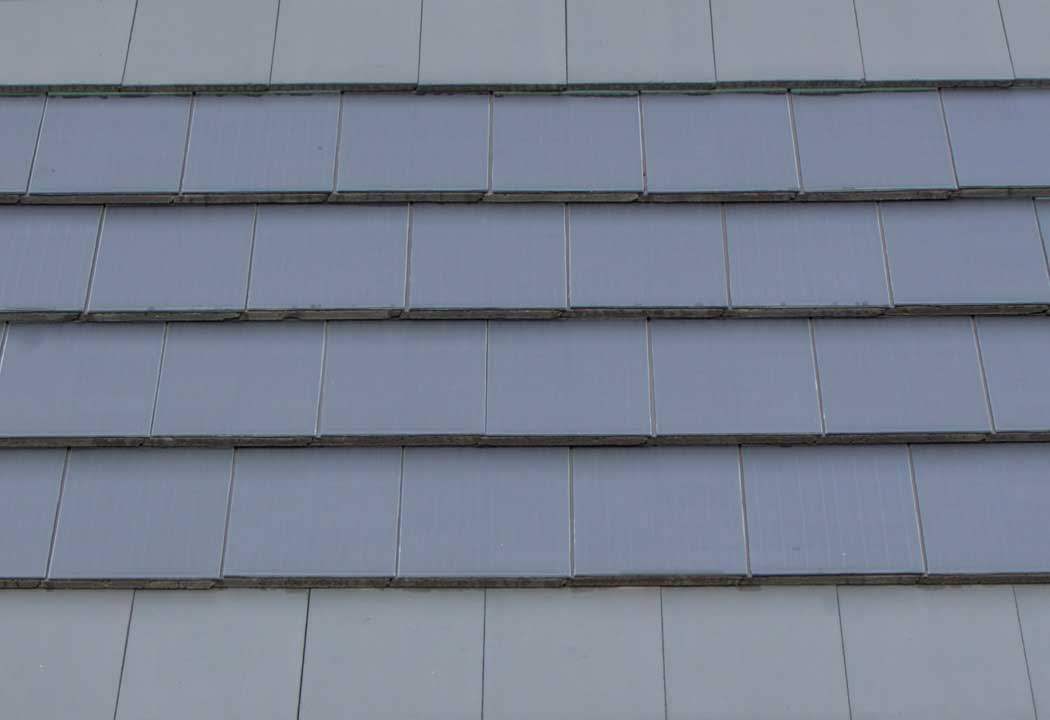From pv magazine’s global site
U.K.-based Roof Tiles Technology has developed a solar tile featuring monocrystalline Perc solar cells which it says resembles a standard concrete roof tile and is suitable for new and renovated roofs.

The flat, dark grey, BiSolar tile has a power output of 18 W and efficiency of 17.5%, according to the manufacturer. “For each square meter, 9.7 tiles are needed, with total output reaching 175 W,” company founder and co-director Antonio Lanzoni told pv magazine. “The solutions we came up with are patented and offer strong protection for the product.”
The device is made of a PV-etched glass panel attached to a concrete roof tile and features 22%-efficient solar cells from a Chinese producer which is “well established in Europe,” said Lanzoni.
The product carries a 25-year performance guarantee and weighs 6 kg — with the PV device contributing 1.2kg and including 3mm of satin tempered glass.
Price
According to Lanzoni, a BiSolar tile installation is 25% to 30% more expensive than a standard rooftop PV array. “But it looks a lot better,” said the company founder, who added, installation costs for BiSolar are cheaper than for rooftop panels. “The BiSolar tile can be installed by a standard roof installer like a normal roof tile, as they can be easily connected via simple MC4 connectors located under the solar panel,” said Lanzoni.
The company began marketing the product late last year but the Covid-19 crisis slowed operations in recent months. “However, we are now supplying to a selected number of potential partners the first pilot roofs in a few countries,” said Lanzoni.
Roof Tiles Technology wants to enter new markets and is said to be in talks with construction and roofing industry businesses about establishing production facilities outside the U.K. “Potential partners will benefit [from] the exclusive right to use our patent, an established supply chain and technical assistance, from the assembly process to roof installation,” Lanzoni added.
The founder of the business said BiSolar installations outperform roofs fitted with conventional tiles in the wind-driven-rain test.
Manufacturing
Lanzoni said the product patent process was begun a year ago and first examination of the BiSolar tile has occurred. The patent requires the combination of PV with a concrete roof tile which does not alter the latter structure or enable water penetration. The product must also be a defined color recognized for varnish, powder coating and plastics, with no blueing effect.
“PV panels are automatically glued to the roof tile surface in a very precise position defined by a robotic line,” said Lanzoni of the production process. “Seals are fixed on three sides of the PV panels.”
Roof Tiles Technology designed a production line with an annual capacity of 18 MW and Lanzoni said the fabrication equipment would be part of the package offered to partners who wish to manufacture BiSolar tiles.
This content is protected by copyright and may not be reused. If you want to cooperate with us and would like to reuse some of our content, please contact: editors@pv-magazine.com.









The reason this tile system costs more is the MC4 connectors and the individual wiring of every tile. If there was a plug in track, like you see with track lighting but with spaces male 1/4 inch stabs that were aready pre-wired that could be put down on the roof first in rows across the roof over the sub layment water proof membrain, then the tiles, with imbeded female slots for positive and negative on the buttom, you just plug in to the male counterparts in the track along with tie down twist locks to hold them in place. The push on terminations would be dry inside the tile and if a tile ever went bad, you would just lift the tile above it, remove the twist hold downs and unplug it by lifting the tile. Put the new one in it’s place, turn the twist down the locks, lower the tiles above and you are done. The tracks could either be low voltste going to micro inverters or series wired for high voltage string inverters. If you used micro inverters and parrallel wired track, the track could come in roles as flexable as a two conductor wire and be cut to length and water tight junktion boxes crimpt onto the track at the jobsite. Eliminating of the MC4 tails and lose wireing would simplify the job and cut the time to install in half.